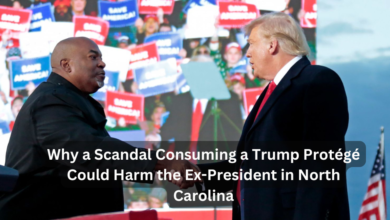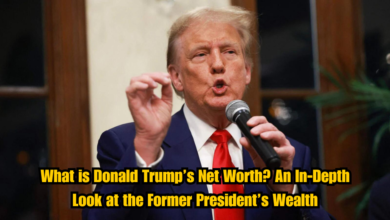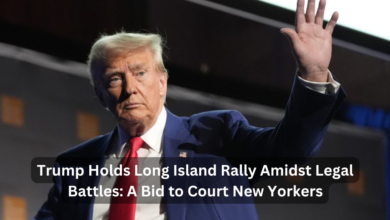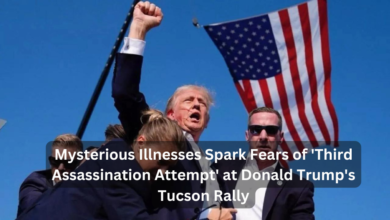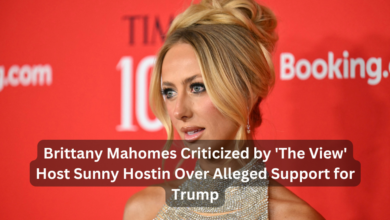The Atlantic’s Foreign Policy Won’t Change With Trump: Here’s Why It Matters
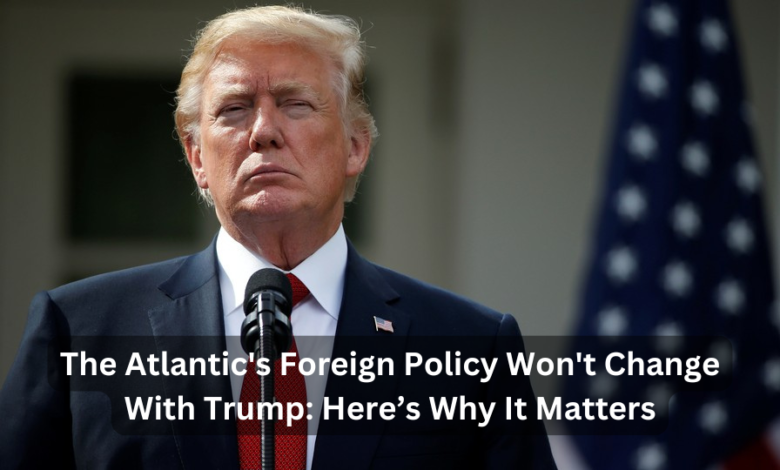
The political landscape in the United States continues to shift dramatically, but when it comes to foreign policy, there is one central truth: the foreign policy agenda of the U.S. is unlikely to experience drastic changes under the administration of Donald Trump, if he returns to office in the upcoming elections. The foundational strategies and long-term commitments of the U.S. on the world stage are rooted in a set of core principles that transcend individual presidencies. This stability ensures that, even if Trump once again occupies the Oval Office, the overarching direction of the U.S. in terms of its global alliances, defense strategies, and economic diplomacy will remain steadfast. Here’s a deep dive into why foreign policy continuity is a hallmark of American governance.
The Bedrock of U.S. Foreign Policy
The U.S. foreign policy apparatus is not simply guided by the preferences of the sitting president. In reality, it is shaped by a combination of institutional forces, including the State Department, the Pentagon, and other federal agencies, alongside influential Congressional committees. These institutions maintain a coherent policy direction that ensures the U.S. remains committed to its key objectives: securing national interests, promoting democracy, and supporting international trade.
The National Security Strategy (NSS) and the National Defense Strategy (NDS), which provide the overarching framework for U.S. military and diplomatic actions, remain consistent, regardless of changes in the presidency. These documents are updated regularly to adapt to emerging threats, but the fundamental objectives of safeguarding U.S. sovereignty, fostering global stability, and ensuring economic security remain constants.
Under Donald Trump, many anticipated radical shifts in foreign policy, yet the core tenets of U.S. global engagement persisted. From maintaining alliances with NATO, to pursuing diplomatic efforts in the Middle East, the Trump administration largely adhered to long-standing foreign policy priorities. Should Trump return to the White House, we can expect a similar pattern of continuity, with perhaps a renewed focus on America First rhetoric, but not a complete overhaul of U.S. foreign policy.
Continuity in International Relations
One of the most significant reasons for the stability of U.S. foreign policy is the intricate network of international alliances and treaties that bind the country to its global partners. Organizations like NATO, the United Nations, and other international coalitions rely heavily on U.S. involvement to maintain global order. Trump, despite his criticism of multilateralism, never withdrew from NATO or the WTO entirely, understanding the critical role these institutions play in maintaining U.S. influence worldwide.
The U.S. also has strategic alliances with nations such as Japan, South Korea, and Australia, which serve to counterbalance growing threats from China and North Korea. The complexity of these partnerships makes it difficult for any single administration to enact sweeping changes without risking national security. Even during the Trump presidency, which witnessed tensions with NATO, the alliances endured because they are deeply ingrained in the strategic calculus of U.S. defense.
Geopolitical Rivalries: China and Russia
Another aspect of U.S. foreign policy that has remained consistent over time is its stance on geopolitical rivals, namely China and Russia. The growing economic and military power of China, alongside the regional aggression of Russia, have been central concerns for successive administrations. Trump, while adopting a more transactional approach towards China and adopting a friendlier tone towards Russia’s Vladimir Putin, did not stray far from the broader U.S. strategy of containment.
China’s rise presents a formidable challenge to U.S. global hegemony, particularly in areas such as technology, military expansion in the South China Sea, and the Belt and Road Initiative. Trump’s administration initiated the trade war with China, imposing tariffs and sanctions, a move that was supported by bipartisan consensus within the U.S. political establishment. Future Trump policies are likely to continue this confrontational stance towards China, focusing on economic decoupling and curbing Chinese influence in critical sectors like 5G technology and artificial intelligence.
As for Russia, the complex relationship between Trump and Putin garnered significant media attention during his presidency. Yet, despite the optics of a warmer personal relationship, U.S. policy towards Russia under Trump remained firm. Sanctions were imposed on Russia for its actions in Ukraine and its interference in the 2016 U.S. elections. In a potential second Trump administration, we can expect a continuation of these policies, given the strategic necessity of countering Russian ambitions in Eastern Europe.
The Middle East: An Enduring Focus
The Middle East has long been a focal point of U.S. foreign policy, and Trump’s tenure did not deviate substantially from established norms. The Abraham Accords, which normalized relations between Israel and several Arab nations, were one of Trump’s key foreign policy achievements. These accords were a continuation of the long-standing U.S. policy of fostering peace in the Middle East, aligning with the broader goal of countering Iranian influence in the region.
Even though Trump withdrew the U.S. from the Iran Nuclear Deal (formally known as the JCPOA), his administration still engaged in diplomatic efforts to curb Iran’s nuclear ambitions and limit its influence in Syria, Iraq, and Yemen. A future Trump administration would likely maintain this hardline stance against Iran while seeking to strengthen relationships with Gulf states such as Saudi Arabia and the United Arab Emirates, both of which are critical allies in the fight against terrorism and regional instability.
Trade Policy and Economic Diplomacy
Trump’s signature “America First” slogan, which emphasized protecting U.S. jobs and industries, was primarily reflected in his trade policy. The U.S.-China trade war, renegotiation of the NAFTA into the USMCA, and tariff impositions on key partners were hallmarks of his economic diplomacy. However, even these seemingly bold actions were part of a broader trend in U.S. policy, where economic leverage is used to secure national interests.
The future of U.S. trade policy under Trump is likely to continue along these lines, with a focus on bilateral agreements rather than multilateral deals. Trump’s team will aim to solidify the USMCA, seek new trade partnerships in Asia (excluding China), and pursue energy independence through the continued support of domestic oil and gas production.
Defense Spending and Military Engagements
Under Trump, defense spending increased significantly, with a focus on modernizing the U.S. military to meet the challenges posed by cyber warfare, space defense, and emerging technologies like hypersonic weapons. The creation of the U.S. Space Force was a notable example of how Trump aimed to secure American dominance in new and evolving areas of conflict.
However, these military priorities were not entirely new. U.S. defense policy has always emphasized maintaining a technological edge over adversaries and ensuring that the U.S. is prepared for future conflicts. Trump’s policies in this arena are likely to continue, with a focus on reducing military engagements abroad while bolstering deterrence capabilities at home.
The withdrawal of U.S. troops from Afghanistan under Trump’s administration, a precursor to Biden’s eventual exit, signaled a broader shift in U.S. foreign policy towards ending “forever wars” in the Middle East and redirecting resources towards great power competition with China and Russia. This approach, rooted in strategic realism, is likely to remain a staple of Trump’s foreign policy in the years to come.
Conclusion: Stability Over Radical Shifts
While Trump’s rhetoric often suggests a desire to upend traditional U.S. foreign policy, his actions during his first term in office showed a deep-seated continuity with the strategies pursued by previous administrations. The U.S. foreign policy establishment is resilient, and its core objectives—maintaining global stability, securing national interests, and promoting democracy—transcend the preferences of any individual president.
In the event of Trump’s return to office, we can expect these objectives to remain intact, with subtle shifts in tone and emphasis but no fundamental overhaul. The U.S. global posture will continue to prioritize strategic alliances, counter geopolitical rivals, and ensure economic and military dominance. As the world grapples with emerging threats and new geopolitical realities, the U.S. foreign policy apparatus will remain a pillar of global order, with or without Trump in the White House.
